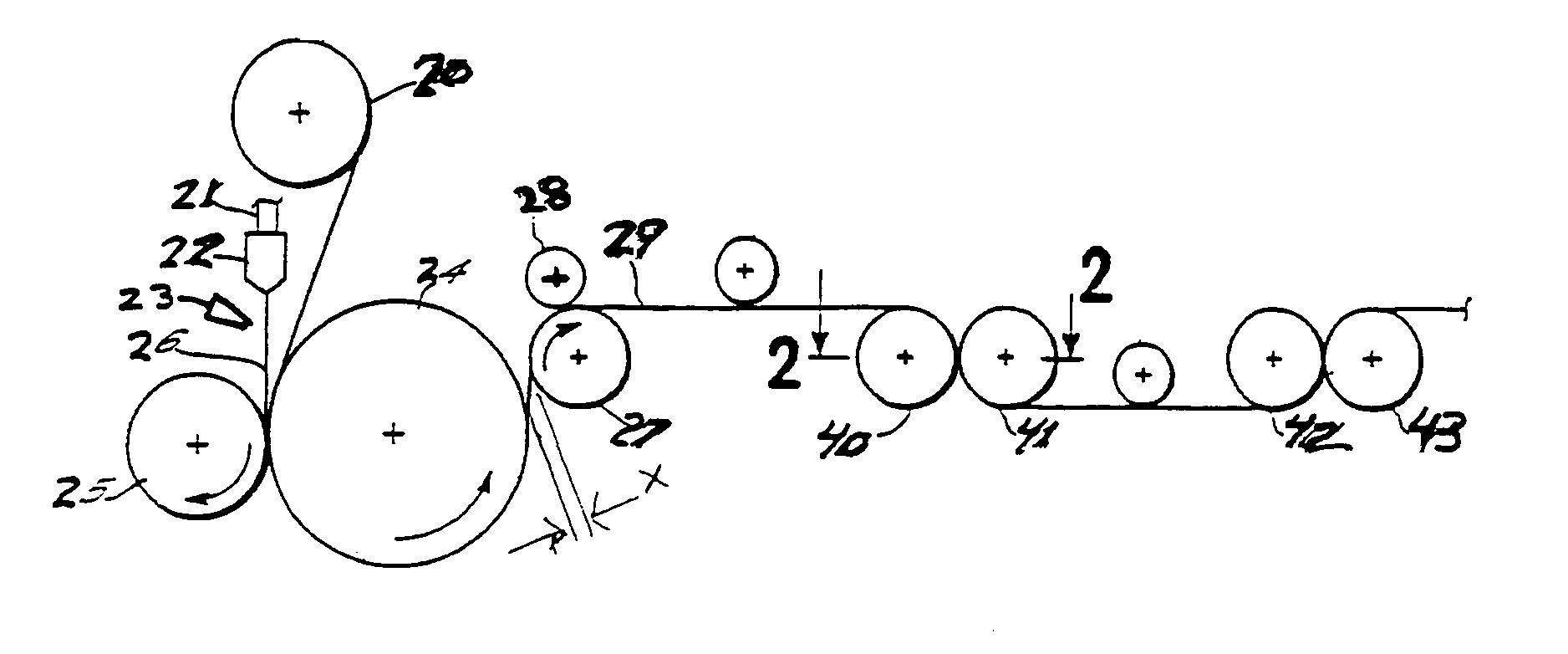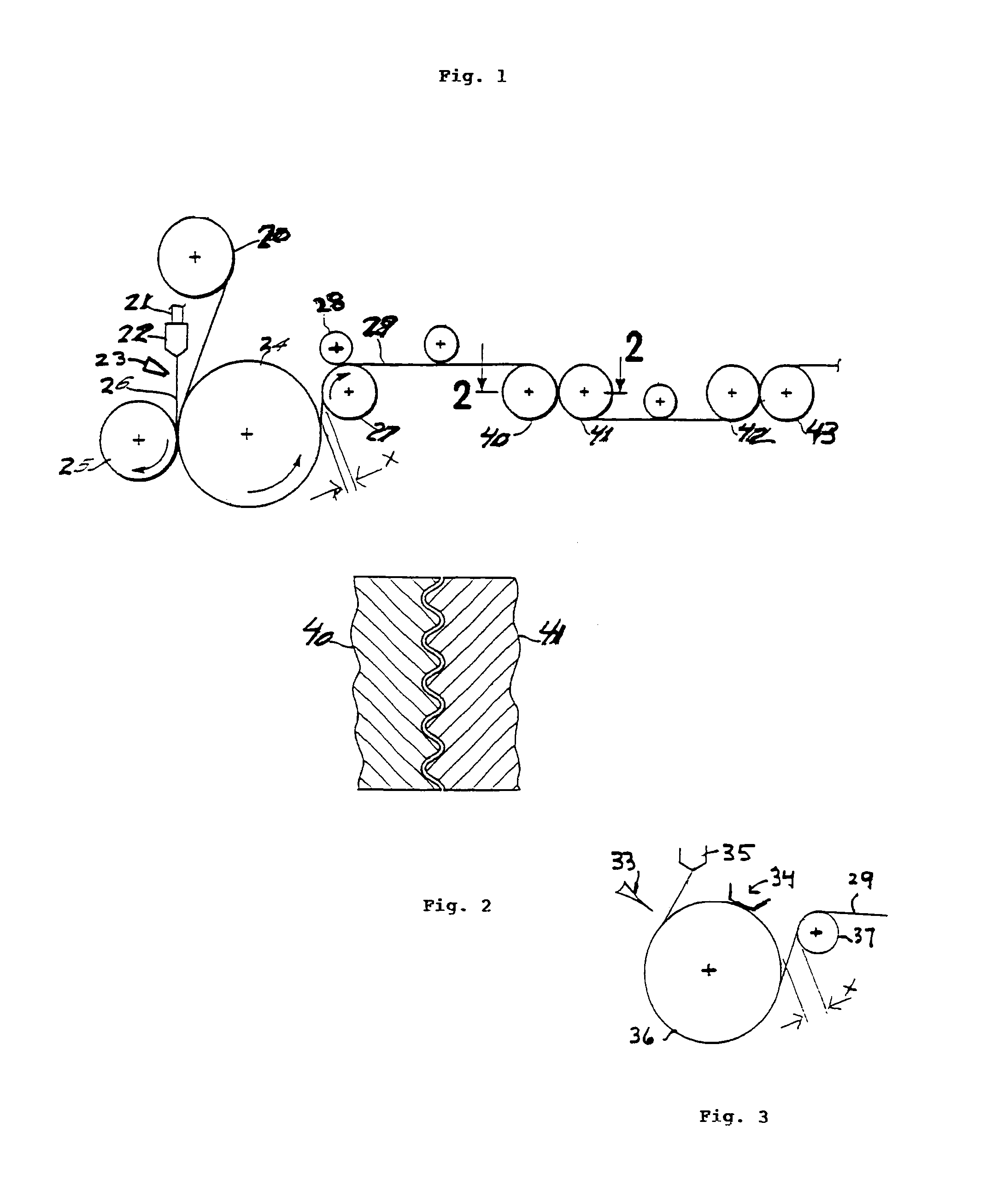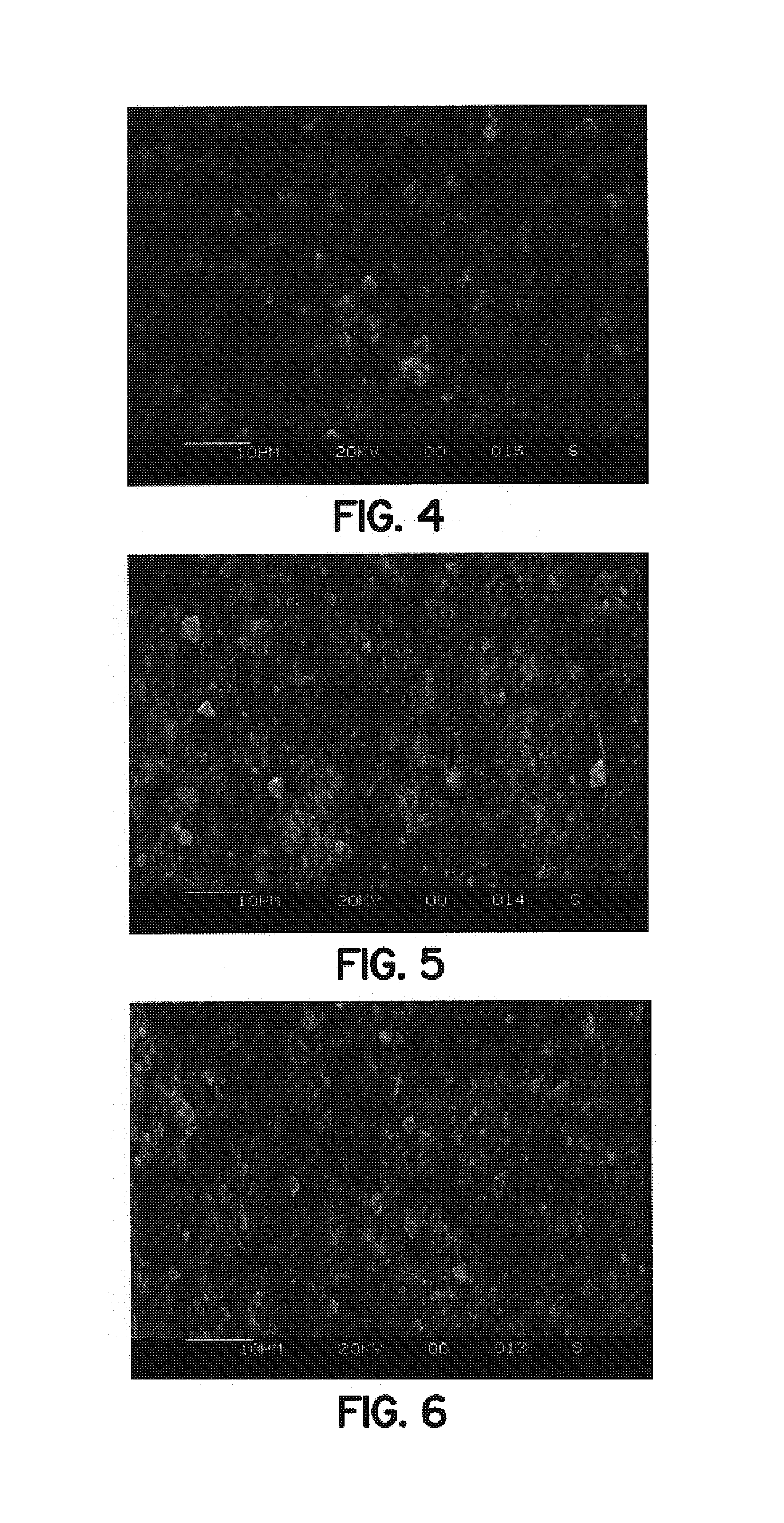Method and apparatus for uniformly stretching thermoplastic film and products produced thereby
a thermoplastic film and uniform stretching technology, applied in the direction of filament/thread forming, layered products, transportation and packaging, etc., can solve the problems of not obtaining the desired mechanical properties and aesthetics and reducing the production efficiency of the thermoplastic film. achieve the effect of improving mechanical properties and uniform gaug
- Summary
- Abstract
- Description
- Claims
- Application Information
AI Technical Summary
Benefits of technology
Problems solved by technology
Method used
Image
Examples
examples i
[0051]A microporous formable formulation containing 55% calcium carbonate, 36% homopolymer polypropylene (PP), 5% low density polyethylene (LDPE), 3% titanium dioxide master batch and 1% of combined processing master batch and antioxidant additives typically used in the film processing is extruded by a conventional single screw extruder 21 and a slot die 22 to form a web 26 which is about 450-500° F. The web 26 is leading into a pressure nip formed by a rubber roller 25 and a metal roller 24. The rubber roll is partially immersed in a water tank (not shown), so its surface is cooled by the water where the water is typically controlled at a temperature between 60-140° F. The web 26, after passing the first pressure nip formed by rubber roller 25 and metal roller 24, is immediately stretched in the machine direction between the first pressure nip and the second pressure nip formed by the rubber roller 28 and metal roller 27. The stretching ratio (R) is defined by the speed (V1) of the...
examples ii
[0054]A microporous formable formulation containing 52.8% calcium carbonate, 38.8% LLDPE, 3% LDPE, 4.4% TiO2 and 1% of processing aid master batch and antioxidant additives typically used in the film extrusion is extruded in a very similar manner as described in Examples I-O to I-D. The experimental conditions and the results are shown in the Table 2. The surface topologies of these examples are shown in FIGS. 9-11 identified as II-A, II-B and II-C.
[0055]Table 3 shows the mechanical properties of Example II-B as MDO stretched followed by incremental stretching in the MD and CD with the apparatus of FIG. 1 using intermeshing rollers 40, 41 and 42, 43 for stretching in the CD and MD, respectively. The intermeshing of stretching rollers are at ambient temperature and the engagement of the rollers on CD and MD are 0.050″ and 0.040″, respectively.
[0056]
TABLE 2FirstSecondMetal RollerMetal RollerRoll GapStretchFilmMVTRTempSpeedTempSpeed(x)Ratio (R)ThicknessE-96EMoconExample(° F.)(fpm)(° F....
examples iii
[0058]Table 4 illustrates Examples I-D and III-A and III-B where the MDO stretched film of I-D was subsequently incrementally stretched in the CD and MD under conditions as shown in the Table 4 for the CD and MD stretchers described above.
[0059]Table 5 demonstrates the mechanical properties of the Table 4 products. The MDO stretching and interdigitating stretching produced microporous film with adjusted and balanced properties such as micropore pore sizes, MVTR, MD and CD modulus and MD and CD tensile strength, as shown by Table 5. The MDO microporous films were continuously CD interdigitated, and CD interdigitated and MD interdigitated, respectively. The surface topologies of these examples are shown in FIGS. 12-13, identified as III-A and III-B.
[0060]
TABLE 4FirstSecondIntermeshingMetal RollerMetal RollerRoll GapStretchDepthMVTRFilmTempSpeedTempSpeed(x)Ratio (R)CDMDE-96EWeightExample(° F.)(fpm)(° F.)(fpm)(inch)(v2 / v1)(inch)(inch)g / m2 / day(gsm)I-D13990701800.052:100290850III-A1399070...
PUM
| Property | Measurement | Unit |
|---|---|---|
| temperature | aaaaa | aaaaa |
| temperature | aaaaa | aaaaa |
| temperature | aaaaa | aaaaa |
Abstract
Description
Claims
Application Information
 Login to View More
Login to View More - R&D
- Intellectual Property
- Life Sciences
- Materials
- Tech Scout
- Unparalleled Data Quality
- Higher Quality Content
- 60% Fewer Hallucinations
Browse by: Latest US Patents, China's latest patents, Technical Efficacy Thesaurus, Application Domain, Technology Topic, Popular Technical Reports.
© 2025 PatSnap. All rights reserved.Legal|Privacy policy|Modern Slavery Act Transparency Statement|Sitemap|About US| Contact US: help@patsnap.com



